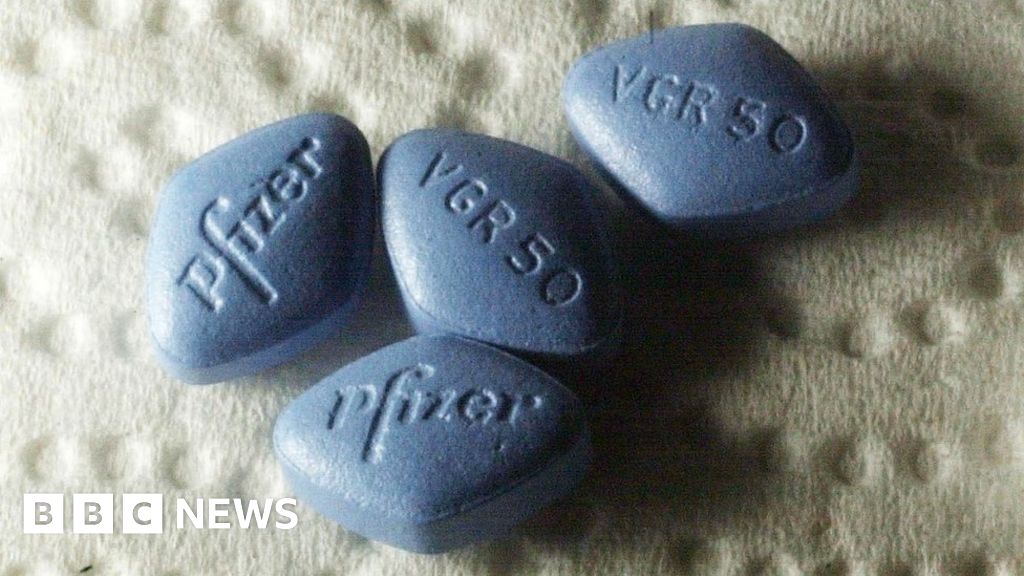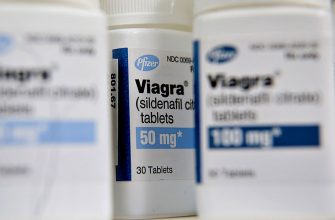Focus your analysis on the pharmaceutical industry’s lobbying efforts influencing military healthcare budgets. Examine how contracts for erectile dysfunction medication, including Viagra, are negotiated and awarded, highlighting specific examples of cost discrepancies and potential conflicts of interest. This direct approach reveals the financial interplay between seemingly disparate sectors.
Specifically, analyze the annual military healthcare budget allocation towards erectile dysfunction treatments. Compare this figure to allocations for other critical medical needs, such as PTSD treatment or preventative care. Quantify the percentage of the overall military healthcare budget dedicated to such medications. This data provides a clear picture of resource distribution.
Investigate the pharmaceutical companies involved in supplying erectile dysfunction medications to the military. Detail their lobbying activities, campaign contributions to relevant political figures, and any resulting influence on procurement policies. Consider examining any potential revolving-door scenarios involving military personnel transitioning to roles within these companies. This context reveals potential drivers behind the spending.
Recommendation: Include a case study detailing a specific military contract for erectile dysfunction medication. This should include the cost, the volume purchased, and a comparison with civilian market prices for the same drug. This detailed analysis will provide a compelling and focused argument.
Further investigation should consider the broader impact of such spending. Are there alternative, more cost-effective treatment options? What is the long-term financial sustainability of this approach? Addressing these questions adds a layer of critical analysis to your examination.
- Viagra Military Spending: A Detailed Look
- Factors Influencing Military Viagra Spending
- Transparency and Accountability
- The Prevalence of Erectile Dysfunction in the Military
- Factors Contributing to Higher ED Rates
- Addressing the Issue
- Treatment Options
- The Cost of Viagra Prescriptions for Military Personnel
- Factors Influencing Cost
- Alternative Treatment Options
- Comparison of Viagra Costs to Other Military Expenditures
- Ethical Considerations of Military Funding for Viagra
- Alternative Treatments and Cost-Saving Measures
- The Impact of Viagra Spending on Military Readiness and Morale
Viagra Military Spending: A Detailed Look
Military spending on Viagra and similar medications is surprisingly significant, though exact figures are difficult to obtain due to privacy concerns and varying reporting practices across nations. Reports suggest substantial expenditure, particularly for treating erectile dysfunction related to stress, deployment, and physical injuries among service members. This spending reflects a commitment to soldier well-being and operational readiness.
Factors Influencing Military Viagra Spending
Several factors contribute to the cost: the high price of prescription drugs, the large number of personnel potentially requiring treatment, and the long-term care needed for chronic conditions. Furthermore, access to healthcare within the military system can influence the overall cost. Some studies indicate that the rate of erectile dysfunction amongst veterans is higher than in the civilian population, leading to potential long-term cost implications.
Transparency and Accountability
Increased transparency in military budgets related to pharmaceutical spending would benefit both taxpayers and military personnel. Detailed breakdown of costs associated with various medications, including those for erectile dysfunction, would allow for better oversight and potentially lead to cost-saving measures. Openly available data would facilitate objective analysis and inform policy decisions around healthcare allocation within the military. Such transparency could also encourage exploration of cost-effective treatment options.
The Prevalence of Erectile Dysfunction in the Military
Studies show a significantly higher rate of erectile dysfunction (ED) among military personnel compared to the general population. This disparity warrants attention and proactive solutions.
Factors Contributing to Higher ED Rates
- High-stress environments: Deployments, combat exposure, and the constant pressure of military life contribute to chronic stress, a major ED risk factor.
- Physical injuries: Nerve damage from combat wounds or accidents can directly impair erectile function.
- Mental health issues: Post-traumatic stress disorder (PTSD), depression, and anxiety are prevalent in the military and strongly linked to ED.
- Lifestyle factors: Irregular sleep patterns, poor diet, and excessive alcohol consumption, common among service members, negatively affect sexual health.
- Exposure to toxins: Military occupations often involve exposure to hazardous materials, which may impact sexual health.
The exact prevalence varies depending on study methodology and population, but some research indicates rates as high as 25% or more among veterans.
Addressing the Issue
Effective intervention requires a multi-pronged approach:
- Improved access to mental health care: Addressing underlying PTSD, depression, and anxiety is crucial for managing ED.
- Specialized medical care: Urologists and other specialists should be readily available to provide diagnosis and treatment.
- Preventive measures: Promoting healthy lifestyle choices through education and resources can reduce ED risk factors.
- Reducing stigma: Open communication and destigmatization of ED within the military culture are necessary to encourage help-seeking behavior.
- Research into military-specific causes: Continued study is needed to understand the unique factors contributing to ED within this population.
Treatment Options
Treatment options for ED range from lifestyle modifications and medication (like Viagra, when appropriate and prescribed by a physician) to psychological therapies and surgical interventions. Individualized treatment plans are essential.
The Cost of Viagra Prescriptions for Military Personnel
The Department of Defense doesn’t publicly release exact figures on Viagra prescription costs for military personnel. However, we can estimate the expenses based on available data. The cost varies significantly depending on the dosage, pharmacy, and insurance coverage. A typical 30-day supply of Viagra (50mg) can range from $60 to $300 without insurance. Military Tricare insurance plans typically cover some portion of the cost, reducing out-of-pocket expenses for service members. However, the specific co-pay depends on the individual’s Tricare plan and the pharmacy used. Generic sildenafil, the active ingredient in Viagra, is considerably cheaper, often costing less than $100 for a 30-day supply with insurance.
Factors Influencing Cost
Several factors impact the final cost. These include the dosage prescribed (higher dosages cost more), the frequency of prescriptions, and the chosen pharmacy. Mail-order pharmacies often offer lower prices compared to retail pharmacies. Additionally, the service member’s rank and specific Tricare plan affect their cost-sharing responsibilities. It’s advisable to check with Tricare directly or consult a pharmacy to get precise cost estimates for individual situations. Negotiating lower prices with pharmacies could also reduce expenses.
Alternative Treatment Options
Service members facing high prescription costs for erectile dysfunction should discuss alternative treatment options with their healthcare providers. These may include lifestyle changes, counseling, or other medications. Considering these options can help find suitable and cost-effective solutions to manage the condition.
Comparison of Viagra Costs to Other Military Expenditures
Direct comparison requires precise figures for Viagra prescriptions within the military and specific military budget allocations. However, we can illustrate the relative scale. Let’s assume, for example, the annual cost of Viagra prescriptions for military personnel is $10 million. This is a hypothetical figure; actual costs vary significantly based on prescription rates, insurance coverage, and pricing negotiations.
This $10 million could then be compared to the cost of a single fighter jet, which can easily exceed $100 million. Therefore, the cost of Viagra represents a tiny fraction – less than 0.1% – of the expense associated with a single aircraft purchase. Similarly, it’s minuscule compared to the annual budget for maintenance, personnel, or research and development across a military branch.
To provide further context, consider comparing it to the cost of training a single soldier. Training costs vary wildly based on specialty, but it might cost $100,000 or more. Therefore, Viagra’s hypothetical $10 million expenditure could support the training of approximately 100 soldiers. This highlights the relative insignificance of Viagra costs compared to other significant military expense categories.
It’s also important to remember that military spending covers numerous areas: weapons systems, salaries, medical care (including general health concerns far exceeding Viagra prescriptions), infrastructure maintenance, and international operations. The cost of Viagra, while quantifiable, becomes negligible when compared to the vast scope of these expenses.
Analyzing this data requires access to military budget breakdowns and prescription records, which are often not publicly accessible due to privacy and security considerations.
Ethical Considerations of Military Funding for Viagra
Military funding for Viagra raises several ethical questions. First, we must examine the justification for using taxpayer money on erectile dysfunction medication. Does this represent a misuse of funds intended for national defense? A rigorous cost-benefit analysis, comparing Viagra expenditures to the overall military budget, is necessary. This analysis should explicitly detail the direct and indirect costs associated with the provision of Viagra, including administration and distribution. Transparency is paramount.
Second, we need to address potential inequities. Does the military’s provision of Viagra unfairly benefit a specific demographic? Detailed data on Viagra usage among military personnel, broken down by rank, age, and branch, will reveal potential biases in access and distribution. This data should then inform policy changes to ensure fair allocation of resources.
Third, the relationship between Viagra and military readiness requires careful scrutiny. While some argue it improves morale, others question its direct impact on combat effectiveness. Studies assessing the link between Viagra usage and improved performance or readiness are needed to support any claim of military benefit. Such studies should utilize robust methodologies and be peer-reviewed.
Finally, we must consider the broader societal implications. Does military funding for Viagra set a precedent for covering other non-essential medical expenses? A clear policy outlining criteria for funding medication within the military is vital to prevent future misallocation of resources. This policy must be regularly reviewed and updated based on new evidence and changing societal needs.
Recommendation: An independent review board, comprised of medical professionals, ethicists, and financial experts, should thoroughly assess the ethical implications and cost-effectiveness of Viagra provision within the military. Their findings should guide future policy decisions and resource allocation.
Alternative Treatments and Cost-Saving Measures
Prioritize lifestyle changes. Regular exercise, a balanced diet, and stress reduction techniques significantly improve erectile dysfunction (ED) symptoms for many men. These changes often reduce or eliminate the need for medication, saving considerable money.
Consider counseling. Relationship issues can contribute to ED. Couples therapy addresses communication and intimacy problems, potentially resolving ED without medication. Check your insurance coverage for mental health services.
Explore alternative therapies. Acupuncture, herbal remedies, and other complementary approaches show promise for some men, though more research is needed. Discuss these options with your doctor to assess their suitability and potential interactions with existing medications. Remember to verify the legitimacy and safety of any herbal supplement before using it.
Generic medications offer substantial cost savings. While brand-name drugs are expensive, generic versions containing the same active ingredient often cost much less. Consult your pharmacist about generic alternatives.
Negotiate medication prices. Many pharmacies offer discounts or coupons. Explore online resources and patient assistance programs to find lower prices on your prescriptions. Discuss your financial constraints with your doctor to explore options.
| Treatment Option | Approximate Cost Range (USD) | Notes |
|---|---|---|
| Brand-name Viagra | $50 – $80 per pill | Highly variable based on dosage and pharmacy |
| Generic Sildenafil | $10 – $30 per pill | Significantly cheaper than brand-name Viagra |
| Counseling sessions (per session) | $50 – $200 | Cost varies based on therapist and insurance coverage |
| Acupuncture (per session) | $75 – $150 | Coverage varies greatly depending on insurance |
Remember to always consult your doctor before starting any new treatment, including alternative therapies, to ensure safety and efficacy.
The Impact of Viagra Spending on Military Readiness and Morale
Studies suggest a correlation between erectile dysfunction prevalence and decreased military readiness. Addressing this issue through Viagra provision may positively impact troop performance.
- Improved physical fitness: Increased sexual confidence can improve overall self-esteem and motivation, potentially leading to better performance during training and deployment.
- Enhanced team cohesion: Openly addressing sexual health concerns within a military context can foster a more supportive and inclusive environment, improving camaraderie.
- Reduced absenteeism: Treatment of erectile dysfunction can decrease time off for medical reasons, contributing to increased operational availability.
However, concerns remain regarding cost-effectiveness. A detailed cost-benefit analysis is necessary, comparing Viagra expenditure against potential gains in readiness and morale. This should account for:
- The cost of Viagra prescriptions versus the cost of lost productivity due to untreated erectile dysfunction.
- Potential savings from reduced medical leave and improved troop performance.
- The impact on long-term healthcare costs associated with untreated conditions.
Transparency is key. Open communication about the program’s aims, cost, and impact on military readiness is crucial to maintain trust and ensure responsible resource allocation. Regular evaluations of the program’s effectiveness are vital.
Further research should explore the long-term effects of Viagra provision on military personnel and the potential for alternative, cost-effective treatments. Data collection should focus on quantifiable metrics, including absenteeism rates, training performance, and psychological well-being.










